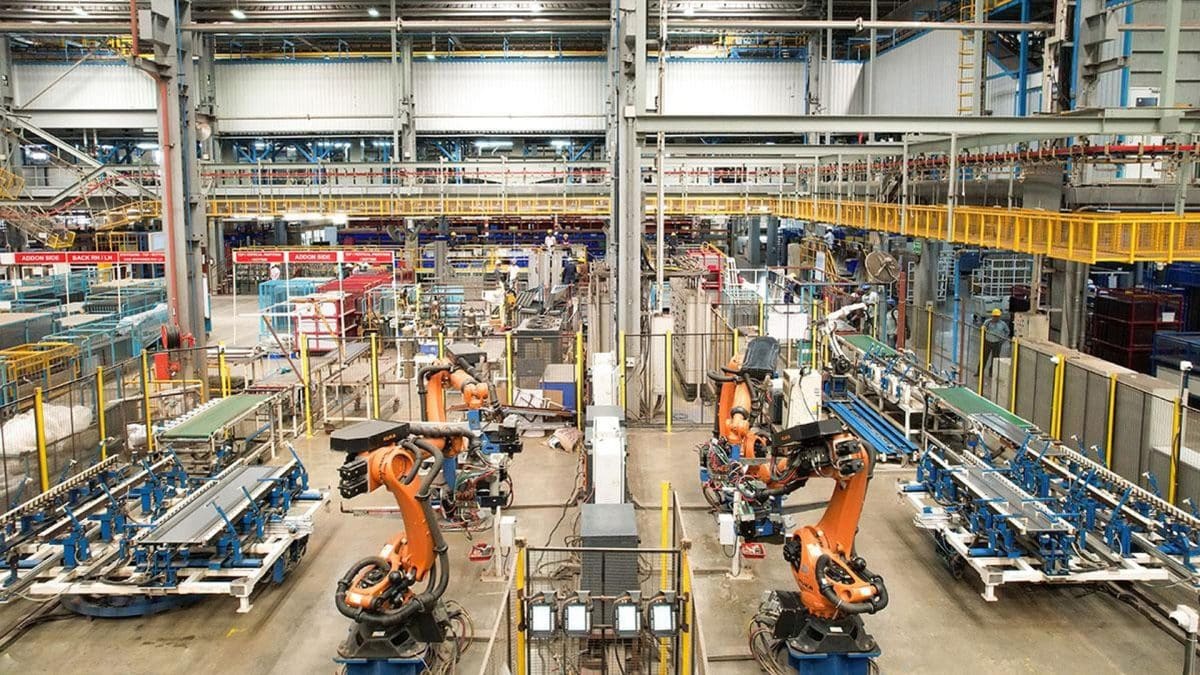The Third Industrial Revolution (TIR), also known as the Digital Revolution, began in the mid-20th century and was characterized by the rise of computers, telecommunications, and automation technologies. While many global economies capitalized on this transformation, India’s progress remained inconsistent and incomplete. Despite emerging as a significant player in IT services, India failed to fully industrialize and leverage technological advancements to transform its manufacturing, infrastructure, and R&D sectors.
India’s sluggish policy decisions, bureaucratic red tape, and inconsistent industrial strategies hindered its ability to capitalize on this revolution fully. The License Raj and overregulation stifled innovation for decades, delaying crucial reforms needed for industrial growth. Despite the economic liberalization in 1991, slow infrastructure development, inadequate investment in skilling and R&D, and a lack of coordinated digital policies kept India behind its global competitors. While countries like South Korea, China, and Taiwan strategically invested in electronics, AI, and automation, India remained overly dependent on IT outsourcing rather than developing indigenous manufacturing and high-tech industries. The failure to prioritize semiconductor production, robotics, and advanced engineering left India playing catch-up, making the transition to the Fourth Industrial Revolution even more challenging.
This article explores the reasons behind India’s partial success in the TIR, analyzing economic policies, infrastructure, education, and global positioning from 1950 to 2014.
The Lost Decades (1950–1980s) of Socialist Policies and License Raj
After independence, India adopted a socialist economic model prioritizing state-led industrialization over private sector-driven growth. This approach, coupled with the License Raj system (1947–1991), restricted private enterprise and created bureaucratic bottlenecks, stifling innovation and industrial expansion. As a result, manufacturing and technological development suffered due to excessive state control and a lack of market-driven incentives.
Additionally, India’s focus on heavy industries such as steel, coal, and energy overshadowed investments in emerging high-tech sectors like electronics, computing, and telecommunications, which drove the global industrial revolution. While organizations like ISRO and DRDO made advancements in space and defense technology, commercial technological penetration remained weak. Another critical shortfall was India’s low R&D investment, which remained stagnant at 0.5–0.7% of GDP, significantly trailing behind global leaders. In contrast, China consistently increased its R&D spending, reaching over 2.4% of GDP by 2015, while South Korea emerged as a research powerhouse, investing nearly 4.3% of its GDP in innovation. This disparity severely restricted India’s ability to drive technological advancements, leaving the country reliant on imported technologies rather than fostering indigenous innovation and industrial competitiveness. The lack of strong university-industry collaboration further slowed technological progress, preventing India from fully leveraging the opportunities of the Third Industrial Revolution.
Gradual Opening (1980s–1991): A Shift but Not Enough
The 1980s marked the beginning of limited economic liberalization in India, allowing domestic industrial giants like Bajaj, Tata, and Mahindra to expand into the automobile and engineering sectors. This period saw moderate growth as Indian companies began to establish themselves in key industries. However, protectionist policies continued to shield domestic firms from foreign competition, which, while providing short-term stability, led to stagnation in product quality and technological innovation. Without the pressure of global competition, many Indian companies operated in a closed market with limited incentives to modernize or invest in cutting-edge research. As a result, while some industries expanded, they primarily relied on outdated technology and struggled to match the efficiency and innovation seen in rapidly industrializing nations.
1991 Economic Reforms: A Partial Leap Forward
The 1991 economic reforms, spearheaded by Prime Minister P.V. Narasimha Rao and Finance Minister Manmohan Singh, were not a proactive policy shift but a forced liberalization necessitated by India’s severe economic crisis. By 1990–91, India’s foreign exchange reserves had depleted to just about $1.2 billion, barely enough to cover three weeks of imports (Reserve Bank of India, 1991). The country faced a balance of payments (BoP) crisis, with a current account deficit of 3.1% of GDP and external debt soaring to $72 billion (IMF Report, 1991).
With credit ratings downgraded and foreign lenders unwilling to provide new loans, India had little choice but to pledge 67 tons of gold to the Bank of England and the Union Bank of Switzerland in exchange for a $2.2 billion loan (Government of India, 1991). This humiliating situation forced the government to implement structural adjustments mandated by the International Monetary Fund (IMF) and World Bank, leading to the adoption of liberalization, privatization, and globalization (LPG) policies.
The manufacturing sector remained weak despite opening up the economy, as reforms primarily favored services over industry. Unlike China, which had strategically liberalized its economy since 1978 with a strong focus on manufacturing and exports, India was compelled to reform under crisis, lacking a well-thought-out industrial growth strategy (World Bank, 1993). While these reforms eventually led to FDI inflows rising from just $100 million in 1990 to $4.3 billion by 2001 (World Bank, 2001), they failed to strengthen India’s industrial base, leaving the country dependent on foreign technology and imports, especially in critical sectors like electronics and semiconductors.
One of the few bright spots during this period was the IT and telecom revolution. The rise of Bangalore as a global IT hub played a crucial role in this transformation, with software exports skyrocketing from $150 million to $97 billion by 2015 (NASSCOM, 2016). Similarly, the telecom industry saw unprecedented growth, as mobile phone users increased from just 2 million in 1995 to over 900 million by 2015 (TRAI Report, 2016), making India one of the largest telecom markets in the world.
However, a major failure during this phase was India’s inability to develop a strong electronics and semiconductor manufacturing ecosystem. While China aggressively invested in hardware, semiconductor fabrication, and electronics manufacturing, India remained reliant on imports, failing to create a self-sufficient supply chain. By 2015, nearly 65% of India’s electronics needs, including critical components like chips and circuits, were met through imports (Ministry of Electronics and IT, 2016), highlighting a strategic gap in industrial policy that hindered India’s ability to compete in the Third Industrial Revolution.
Manufacturing Sector—The Biggest Failure
India’s delayed industrial modernization during the 1980s–2000s resulted in a missed opportunity to become a global manufacturing hub. While China aggressively pushed industrial reforms, attracting global supply chains, India’s lack of strategic policy interventions kept its share of global manufacturing below 3%, whereas China accounted for 25% by 2015 (World Bank, 2015). This gap widened due to India’s rigid labor laws, which discouraged large-scale industrialization, and its poor infrastructure, which made manufacturing uncompetitive on a global scale. Power shortages, high logistics costs, and inadequate transport networks further exacerbated the problem, with India’s logistics cost as a percentage of GDP at 14% compared to China’s 8% (NITI Aayog, 2015), increasing operational costs for businesses.
Another major drawback was India’s limited adoption of automation and robotics, a crucial factor in boosting industrial efficiency. While countries like Japan and Germany led the way in robotic automation, India’s robotic density remained extremely low at just 3 robots per 10,000 workers, compared to 309 in Germany and 303 in Japan (International Federation of Robotics, 2016). This lack of automation reduced productivity and global competitiveness.
Had India prioritized industrial modernization over a service-driven growth model, it could have created millions of formal sector jobs, improved exports, and strengthened domestic manufacturing. Unlike the service sector, which primarily benefited urban and educated populations, a strong manufacturing base would have uplifted rural and semi-urban economies, ensuring widespread economic prosperity (McKinsey Global Institute, 2015). The absence of a robust manufacturing sector made India reliant on imports for essential goods, weakening self-reliance and long-term economic stability.
Education & Skill Gaps: The Weakest Link
India’s education and skill gap was a critical weakness that hindered its ability to fully capitalize on the Third Industrial Revolution. While STEM education in India produced many graduates, it lacked alignment with industry needs, leaving many job seekers unprepared for high-tech and industrial roles. A 2015 study by Aspiring Minds found that only 10% of Indian graduates were employable in advanced technology sectors, highlighting the disconnect between academic curricula and practical skills (Aspiring Minds National Employability Report, 2015). Unlike Germany’s strong apprenticeship system, which integrates vocational training with industrial requirements, India’s vocational education remained underdeveloped, with less than 5% of the workforce receiving formal skill training (NSDC Report, 2015).
This skill deficit significantly impacted India’s manufacturing sector, which required a technically skilled workforce to operate and innovate in areas like electronics, precision engineering, and automation. Instead, the country became overly reliant on the service sector, which, while beneficial for GDP growth, could not provide mass employment opportunities at scale. The manufacturing sector is crucial for full-fledged economic development, as it generates millions of direct and indirect jobs, boosts exports, strengthens domestic supply chains, and fosters innovation (McKinsey Global Institute, 2015). By contrast, an excessive focus on IT and services created a lopsided economy, where industrial self-sufficiency remained a distant goal, forcing India to rely on imports for critical sectors like electronics, semiconductors, and high-end machinery.
Comparative Analysis with Global Peers
A global comparison underscores India’s lost opportunities in the Third Industrial Revolution as it remained largely labor-intensive, while other nations transitioned to high-tech manufacturing and automation. Under its Made in China 2025 strategy, China shifted from low-cost, labor-intensive production to advanced manufacturing, becoming the world’s largest electronics and AI hub. By 2015, China’s high-tech exports accounted for 26% of total exports, compared to India’s 7% (World Bank, 2016). Similarly, South Korea strategically invested in R&D and high-tech exports, with Samsung, LG, and Hyundai driving over 60% of its GDP (Korea Institute of Science and Technology, 2021). Meanwhile, Germany was an early adopter of Industry 4.0, implementing advanced automation and robotics, ensuring it retained leadership in precision engineering and high-value manufacturing (World Economic Forum, 2020).
In contrast, India remained largely labor-intensive, failing to transition into advanced manufacturing. While the service sector grew, creating a white-collar workforce in IT and finance, India missed the opportunity to develop a robust manufacturing ecosystem. By 2015, India’s manufacturing share in GDP remained stagnant at 16%, whereas China’s surged past 29% (World Bank, 2016). The lack of focus on automation, robotics, and semiconductor industries kept India reliant on importing high-tech goods, deepening the trade deficit. To compete globally, India must now aggressively invest in R&D, automation, and deep-tech manufacturing, bridging the gap with global leaders.
Lessons from the Third Industrial Revolution
While India made significant progress in IT, software, and services, it missed the manufacturing and automation wave that defined the Third Industrial Revolution. Rigid policies, lack of R&D investments, poor infrastructure, and a late push toward industrial modernization were the primary reasons. However, with Industry 4.0 on the horizon, India has a chance to correct past mistakes and emerge as a global leader in AI, robotics, and advanced manufacturing.
If India learns from its past and focuses on deep-tech R&D, hardware manufacturing, and digital automation, it can lead the Fourth Industrial Revolution and fulfill its ambition of becoming a $5 trillion economy.
The views and opinions expressed here belong solely to the author and do not reflect the views of BlueKraft Digital Foundation.







